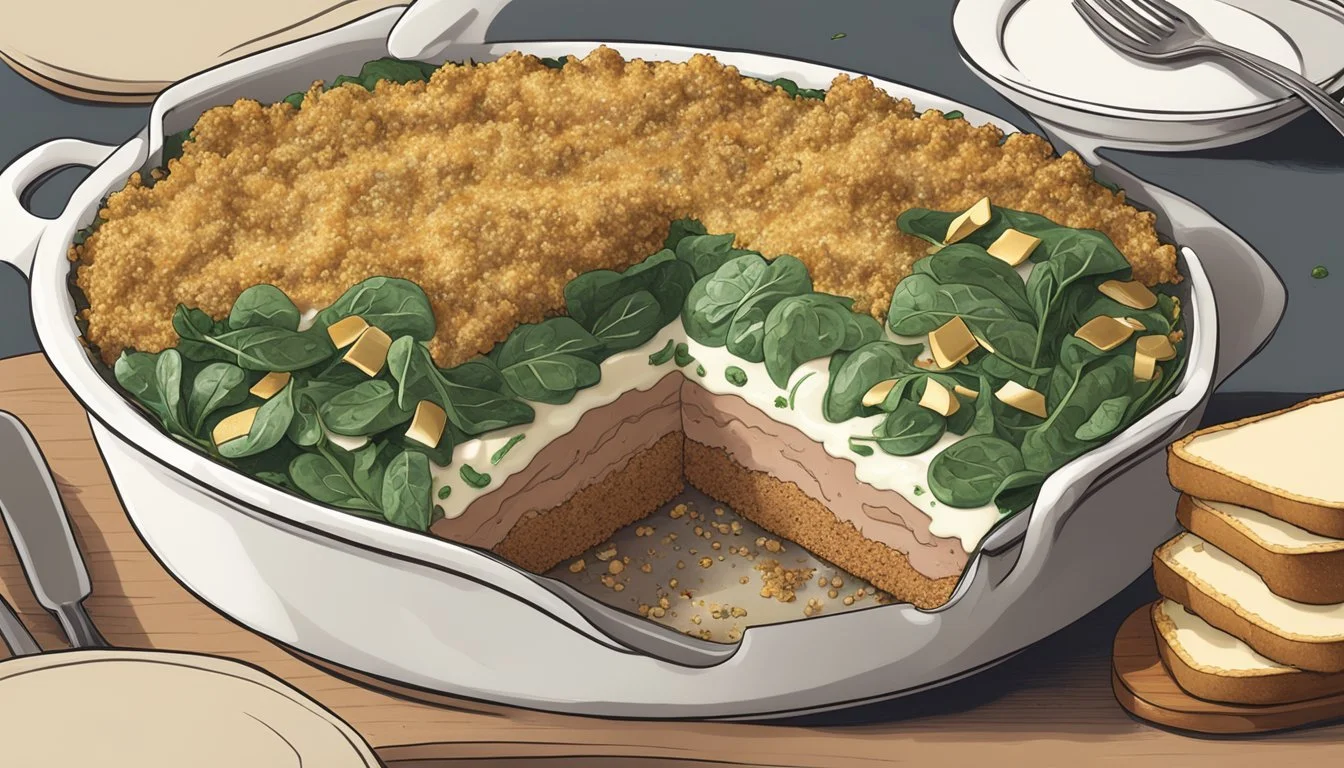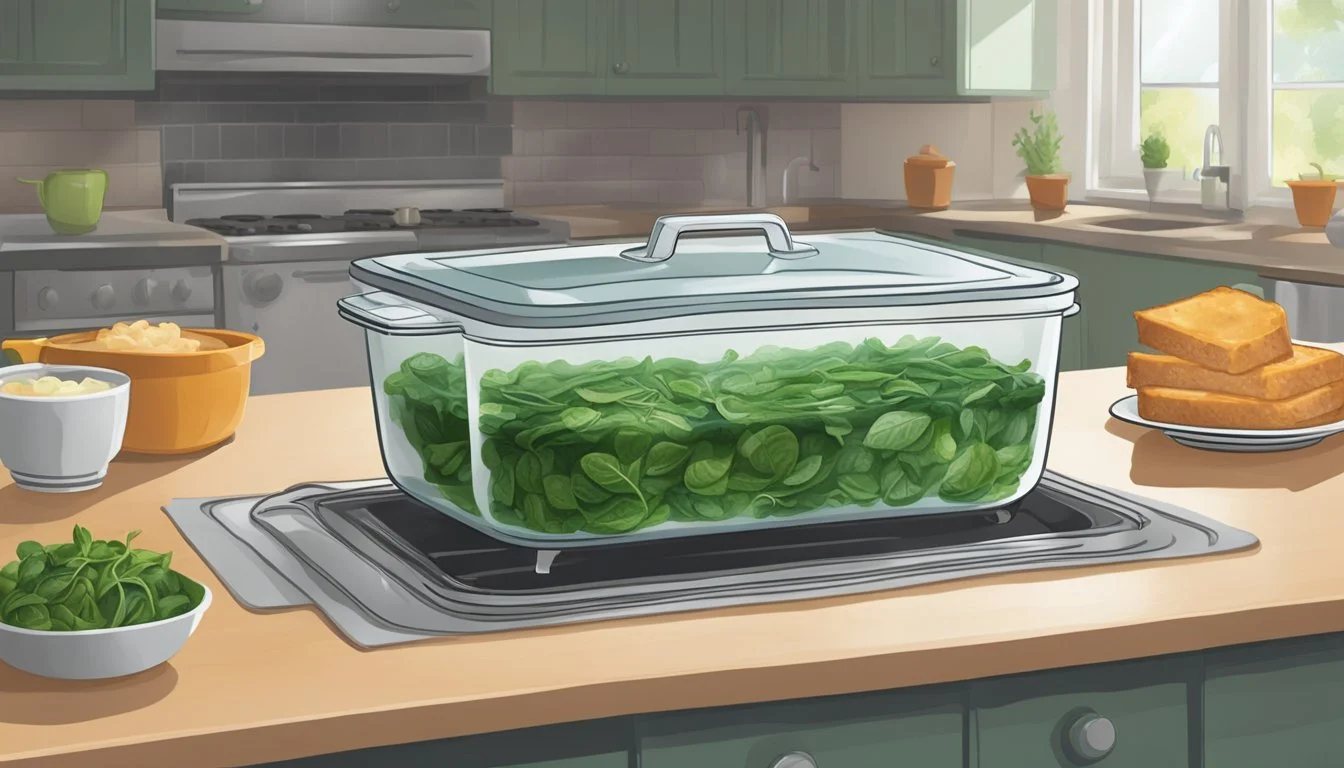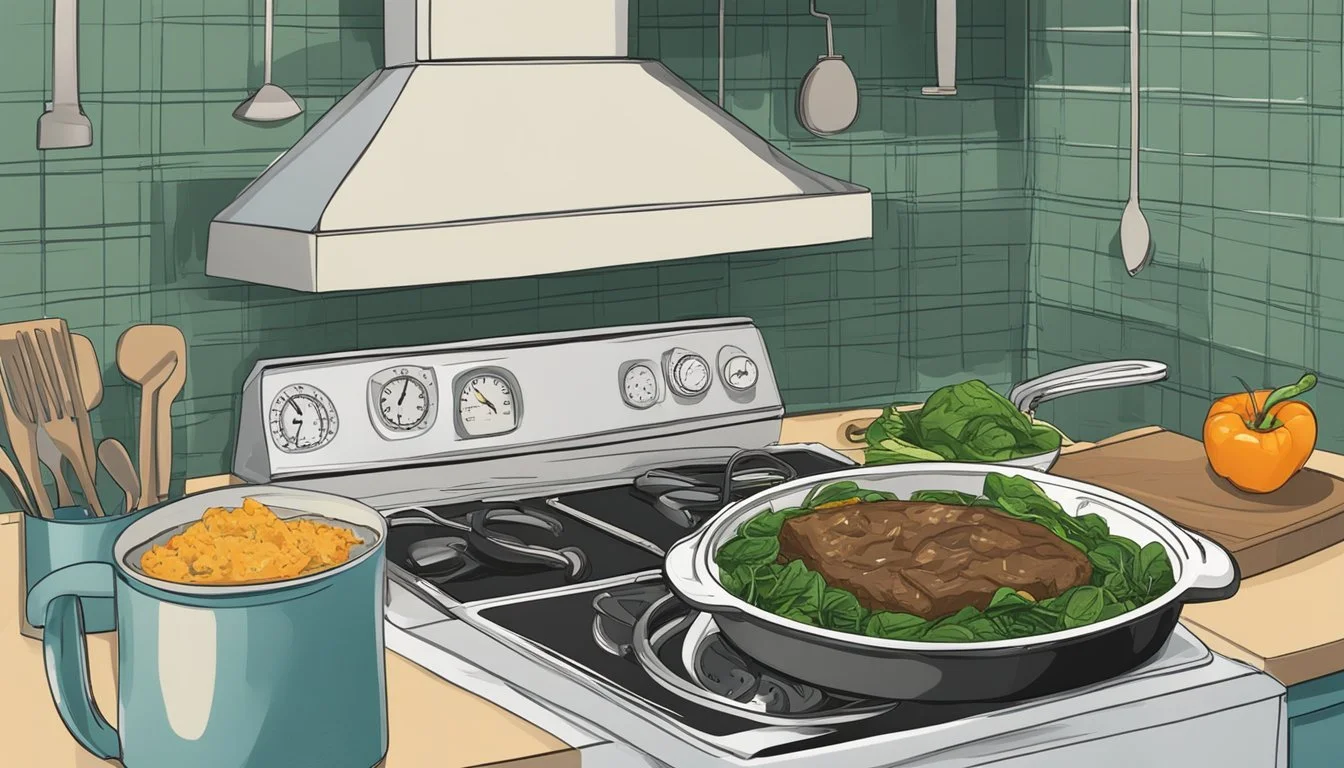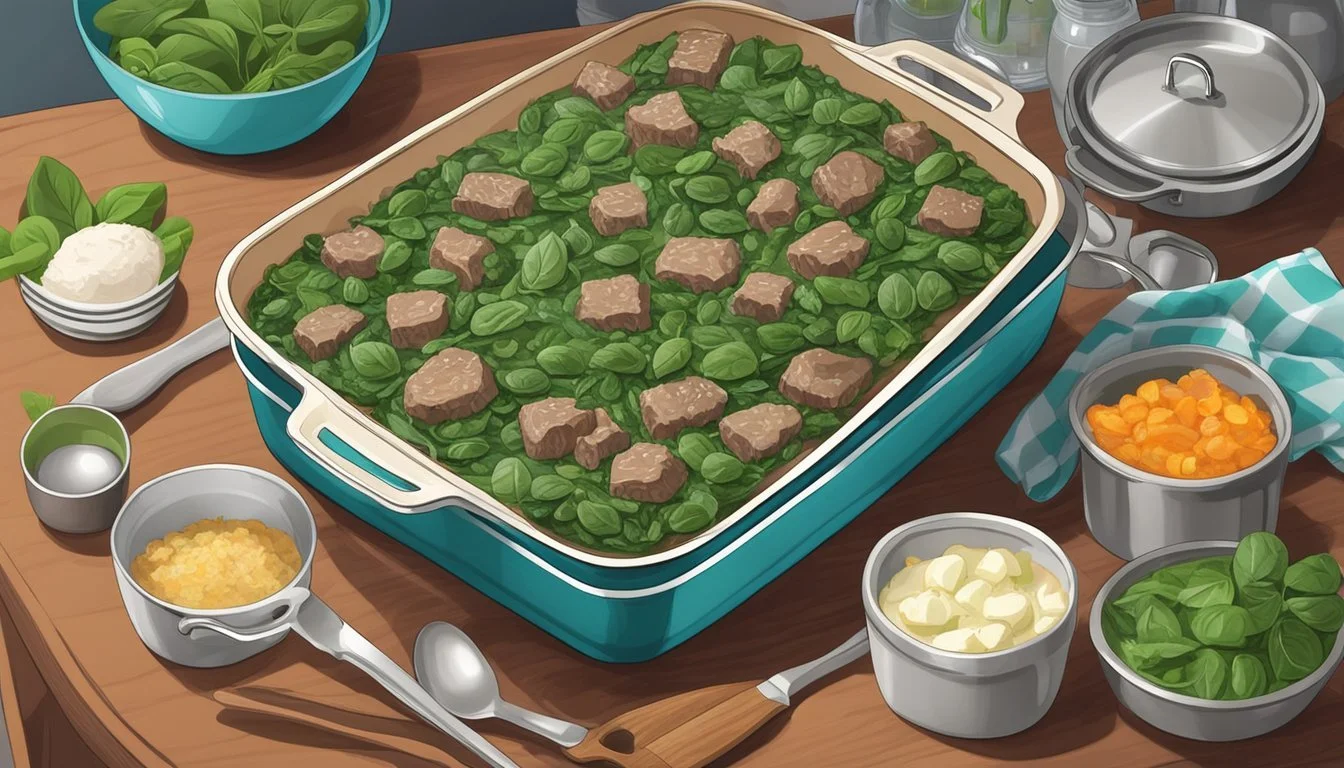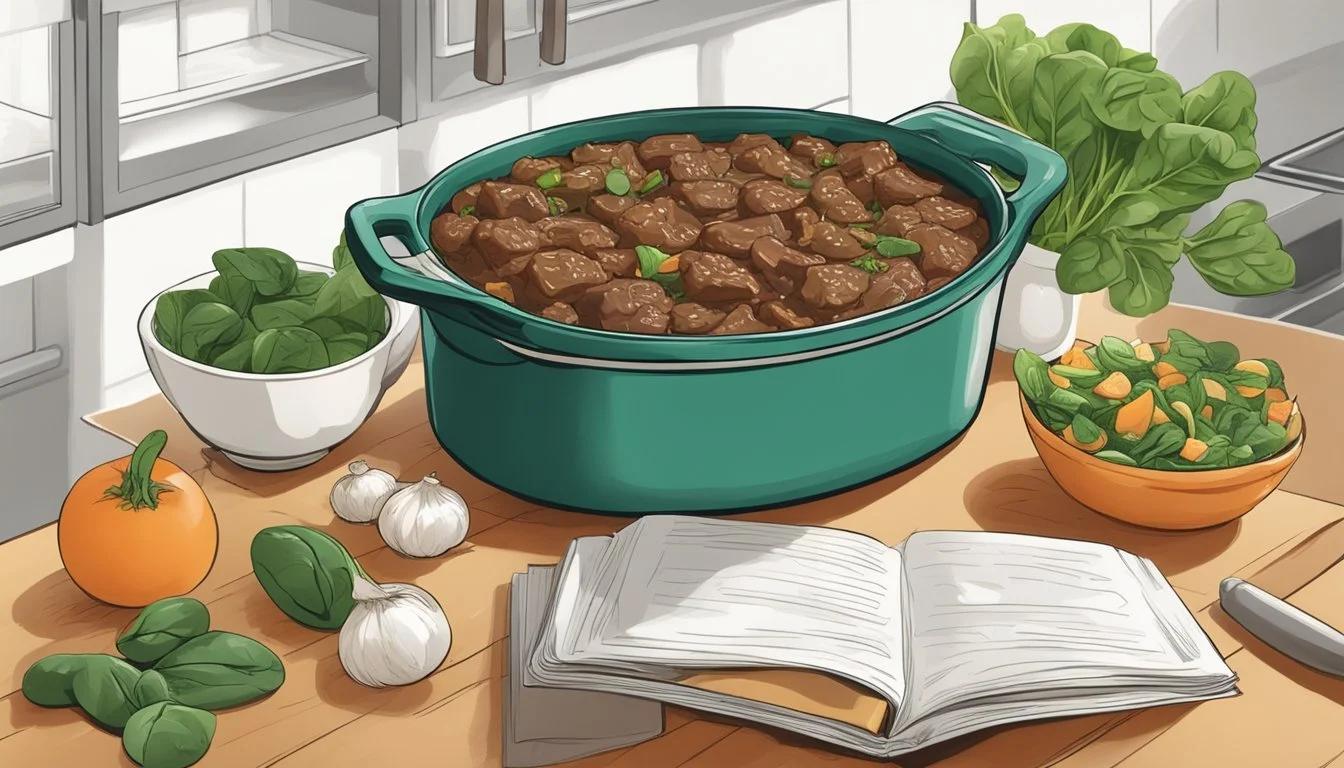How Long Does Beef and Spinach Casserole Last?
Storage Tips and Shelf Life
Beef and spinach casserole is a hearty, comforting dish that combines savory ground beef with nutritious spinach, creating a meal that's as delicious as it is nourishing. When cooking up a large batch, it’s common to wonder about its shelf life. Leftovers can be safely stored in the refrigerator for up to three to four days. This ensures that you can enjoy this delicious meal later without worrying about food safety.
Proper storage is key to maximizing the lifespan of your beef and spinach casserole. After allowing it to cool, place the leftovers in an airtight container and refrigerate promptly. If you need your dish to last longer, consider freezing it; properly frozen casseroles can last for up to three months without losing flavor or texture.
When you’re ready to reheat your casserole, make sure it reaches an internal temperature of 165°F to ensure it is safe to eat. Cover it loosely with foil to avoid drying out the top and reheat in a 300°F oven for about 20 minutes. For a crispy topping, remove the foil in the last few minutes of heating.
Composition of Beef and Spinach Casserole
A beef and spinach casserole features a hearty mix of meats, vegetables, and dairy. It often includes ground beef, spinach, and cheese variations, balanced with seasonings and soups to enhance flavor and texture.
Ingredient Profiles
Ground Beef serves as the primary protein, adding richness and heartiness. It's typically browned with onions and garlic for additional flavor.
Spinach, either fresh or frozen, offers nutritional benefits like iron and fiber. It is often cooked until wilted and mixed into the casserole.
Various cheeses such as grated mozzarella, ricotta, or cottage cheese are used, providing creaminess and enhancing the dish's texture.
Common additives include mushrooms, salt, pepper, and oregano for seasoning. Some recipes also include canned soups like cream of celery or cream of chicken to bind the ingredients together and add creaminess.
Nutritional Value
A typical beef and spinach casserole can be rich in protein from the ground beef and various cheeses.
It contains fiber from the spinach and mushrooms, crucial for digestive health.
Calories and saturated fat content come largely from the beef and cheeses, so it may be high in these areas.
Vitamins like Vitamin A and Vitamin C from spinach and potassium are present, supporting immune health and muscle function.
Such casseroles also provide calcium for bone health due to cheese and dairy content, while iron from spinach and beef supports oxygen transport in the blood.
Monitoring cholesterol, sodium, and overall fat content is important depending on the specific recipe variations.
Potential Substitutions for Ingredients
There are multiple ways to adapt the casserole while maintaining its core profile.
Ground beef can be substituted with leaner meats like ground turkey or even plant-based proteins for a healthier option.
For those avoiding dairy, nutritional yeast and dairy-free cheeses can replace traditional cheeses without sacrificing much flavor.
Fresh spinach can be swapped with other leafy greens like kale or Swiss chard to diversify the nutrient profile.
If you're looking to reduce sodium, select low-sodium versions of cream of celery or cream of chicken soup, or make a homemade version.
Using egg whites instead of whole eggs or incorporating olive oil in place of butter can further reduce cholesterol and saturated fats.
Preparation Techniques
Proper preparation is essential to achieve the best flavor and texture for a beef and spinach casserole. This involves specific steps during cooking and baking.
Cooking Instructions
Start by defrosting and squeezing out excess water from frozen spinach. Fresh spinach can also be used, but it should be shredded finely. A large skillet is ideal for this recipe. Heat the skillet over medium heat. Add ground beef and diced onions. Cook until the beef is browned and the onions are softened.
Next, add diced mushrooms, minced garlic, and oregano. Continue cooking until the vegetables are soft and fragrant. Season the mixture with salt and black pepper. At this stage, mix in the spinach. Ensure it is well incorporated into the beef mixture.
Baking Requirements
Preheat the oven to 350°F. While the oven heats, prepare a casserole dish by lightly greasing it. Spread a layer of the meat mixture on the bottom. Cover it with a layer of cooked pasta if desired for additional texture.
Top with a mixture of condensed soup and cheese. Repeat layers, finishing with a final layer of the cheese mixture. Cover the dish with foil and bake for approximately 30-35 minutes. For a crispy topping, remove the foil during the last 5-10 minutes of baking. Ensure the casserole is bubbling and heated through before removing it from the oven. Let it rest briefly before serving to set.
Storing the Casserole
Proper storage ensures that a beef and spinach casserole remains safe to eat and retains its flavors. Careful handling minimizes the risk of harmful bacteria developing.
Refrigeration Guidelines
Refrigerating a beef and spinach casserole correctly is crucial. If the casserole contains cooked ground meat and vegetables, it can be stored in the refrigerator for 3 to 4 days. Make sure to cover the dish with aluminum foil or transfer leftovers into airtight containers. Write the storage date on the container to keep track of freshness. Refrigerating promptly, ideally within two hours of cooking, reduces the risk of bacteria growth.
Freezing and Thawing Methods
Freezing the casserole extends its lifespan up to 3 months. For best results, cool the dish completely before preparing it for the freezer. Line the dish with aluminum foil or parchment paper for easy removal. Once frozen solid, remove it from the baking dish and wrap it tightly in foil and plastic wrap. Label with the date before returning it to the freezer.
To thaw, transfer the casserole to the refrigerator and let it thaw slowly overnight. This method keeps the casserole at a safe temperature, preventing bacteria development. Avoid thawing at room temperature to ensure food safety.
Using Airtight Containers
Using airtight containers for storage is essential for maintaining the quality of a beef and spinach casserole. When using airtight containers, the leftovers stay fresher, free from contamination, and help prevent freezer burn. Choose containers made from BPA-free plastic or glass for optimal safety. Make sure the lids fit snugly to prevent air and moisture from entering.
Before storing, allow the casserole to cool completely to avoid condensation inside the container. Stackable containers help with organization and save space in the refrigerator or freezer. Label each container with storage dates and contents to manage meal prep efficiently.
Allowing the casserole to cool and adhering to these storage tips ensures it remains safe and delicious when reheated.
Evaluating Casserole Longevity
When determining how long a beef and spinach casserole can last, both its freshness indicators and spoilage signs should be considered. The right storage methods and recognizing early signs of spoilage are key.
Freshness Indicators
A freshly made beef and spinach casserole, if properly stored in the refrigerator, can last for about 3-5 days. The recommended storage involves placing the casserole in shallow containers to ensure rapid cooling, minimizing the time spent in the "danger zone" where bacterial growth is most active.
Keep an eye on moisture levels; excessive liquid pooling can indicate that the casserole won't last much longer. If the casserole contains cooked beef and vegetables, it helps in extending the freshness slightly as these ingredients have a longer shelf life compared to raw meat. Proper wrapping with plastic or airtight containers can also help in retaining moisture and keeping the casserole fresher for longer.
Signs of Spoilage
Signs of spoilage in a beef and spinach casserole are often visible and detectable through smell and texture. One key indicator is an off odor, which can range from slightly sour to significantly unpleasant. This smell typically signals bacterial growth or fermentation.
Visible mold growth is another clear sign that the casserole should be discarded. Mold can appear as green, white, or black patches on the surface. Additionally, if the casserole exhibits a slimy texture or a change in color, these are further indicators that it is no longer safe to consume.
Dry or overly crusty edges might not necessarily indicate spoilage but could point to improper storage or prolonged exposure to air. A casseroled dish should be moist but not excessively wet; an imbalance might hint at spoilage or poor storage conditions.
Serving Suggestions
Enhance your beef and spinach casserole with the right accompaniments and thoughtful plating and presentation techniques. These details can elevate the dish's flavor and visual appeal.
Accompaniments
Pairing your casserole with complementary sides can create a well-rounded meal. Garlic bread or a crusty baguette is ideal for soaking up any extra sauce from the casserole.
Roasted vegetables, such as carrots, zucchini, or bell peppers, provide a balanced and nutritious side. For a lighter option, consider a simple green salad with a lemon vinaigrette.
If you want to add a bit of zest, a small serving of pickled veggies can bring a refreshing tang to the meal. Adding hot sauce on the side allows guests to add an extra kick if desired.
Plating and Presentation
Plating your casserole with attention to detail enhances the dining experience. Use shallow bowls or large plates to allow enough room for the accompaniments.
Garnish the casserole with freshly chopped green onions or a sprinkle of grated Parmesan cheese to add color and texture. Arrange vegetables around the casserole to create a visually appealing contrast.
For an elegant touch, drizzle a small amount of olive oil over the top of the casserole before serving. This adds a subtle sheen and enhances the overall presentation.
Customizing the Casserole
You can easily adapt a beef and spinach casserole to fit dietary needs or personal preferences. Here are some dietary modifications and variations to enhance its taste and texture.
Dietary Adjustments
For those seeking a low-carb or keto-friendly option, replace regular pasta with zucchini noodles or cauliflower rice. Use lean ground beef to cut down on fat, or substitute with ground turkey for a lighter meal.
Dairy-free alternatives include using nut-based cheese or coconut milk instead of traditional cheese and cream. Also, gluten-free pasta brands can be substituted for a gluten-sensitive diet. Another option is to add more vegetables like bell peppers or zucchini for additional nutrients without significantly changing the flavor profile.
Ingredient Substitution Option Pasta Zucchini noodles Cheese Nut-based cheese Cream Coconut milk Ground Beef Ground turkey
Variations for Taste and Texture
Experimenting with spices and herbs can elevate the taste of your casserole. Adding oregano, thyme, or rosemary can bring out different flavor dimensions. Include mushrooms for an earthy taste or bell peppers for a sweeter profile.
For a crispier texture, top the casserole with a layer of breadcrumbs or crushed nuts. An addition of sour cream or cream cheese can add a creamy element, balancing the robustness of the meat and vegetables. If you prefer a spicier dish, incorporate ingredients like hot sauce or chili flakes.
By making these adjustments, it's easy to create a customized dish that meets individual tastes and dietary requirements, ensuring everyone can enjoy this delightful meal.
Health and Safety Considerations
Proper handling and cooking are essential for ensuring the safety of any beef and spinach casserole. This section discusses safe cooking practices and effective measures to prevent foodborne illnesses.
Safe Cooking Practices
Cooking beef thoroughly is crucial to kill harmful bacteria such as E. coli and Salmonella. Ground beef should be cooked to an internal temperature of at least 160°F (71°C). Steaks and roasts should reach an internal temperature of 145°F (63°C), followed by a three-minute rest period.
Spinach, another key ingredient, should be washed thoroughly under running water. Cutting off the stems before use can help remove potential contaminants. A meat thermometer is an important tool to ensure the beef reaches appropriate temperatures. If reheating the casserole, it should be heated to at least 165°F (74°C) to ensure all parts are hot enough to kill any lingering bacteria.
Preventing Foodborne Illness
Food safety begins with proper storage. Raw ground beef should be stored in the fridge and used within 1 to 2 days. Steaks or roasts can last 3 to 5 days. Spinach also needs careful storage; it should be kept in the refrigerator and used within a few days to maintain freshness and reduce the risk of contamination.
Cross-contamination is another concern. Raw meat should be kept away from other foods, and surfaces used for raw meat should be sanitized properly. Using separate cutting boards for meat and vegetables is recommended.
Ensuring hands are washed thoroughly before and after handling raw meat and spinach is another key step. By following these guidelines, the risks of foodborne illnesses can be significantly minimized.
Frequently Asked Questions
How long does a beef and spinach casserole last in the fridge?
A beef and spinach casserole typically lasts for 3 to 4 days in the refrigerator. Ensure the casserole is stored in an airtight container at 40°F or lower.
Can I freeze beef and spinach casserole?
Yes, beef and spinach casserole can be frozen. Ensure it is stored in an airtight container or wrapped tightly in plastic wrap and aluminum foil. It can last up to 2-3 months in the freezer.
How should I reheat leftovers?
To reheat, cover the dish loosely with foil and warm in a 300°F oven for about 20 minutes. For a crispy topping, remove the foil during the last 5-10 minutes.
What ingredients are commonly used in beef and spinach casserole recipes?
Common ingredients include ground beef, spinach, ricotta or other dairy, tomato sauce, spices like basil and oregano, and various other proteins.
Is a beef and spinach casserole considered a protein-rich meal?
Yes, the combination of ground beef and spinach provides a high-protein meal, making it suitable for those looking to increase their protein intake.
How can I make this recipe creamy?
Adding ricotta cheese or a creamy sauce can make the casserole creamy. Dairy products like mozzarella or cream cheese can also enhance the creaminess.
Are there any quick and easy meal prep tips for this casserole?
Prepare all the ingredients in advance, such as browning the beef and washing the spinach. Assemble the casserole the night before baking for a quick meal the next day.
What measurements are needed for a standard recipe?
A typical recipe might call for 1 pound of ground beef, 2 cups of fresh spinach, 1 cup of ricotta, 1 can of tomato sauce, and a blend of spices such as basil and oregano.
Keeping these FAQs in mind can help ensure that you enjoy your beef and spinach casserole to its fullest.


